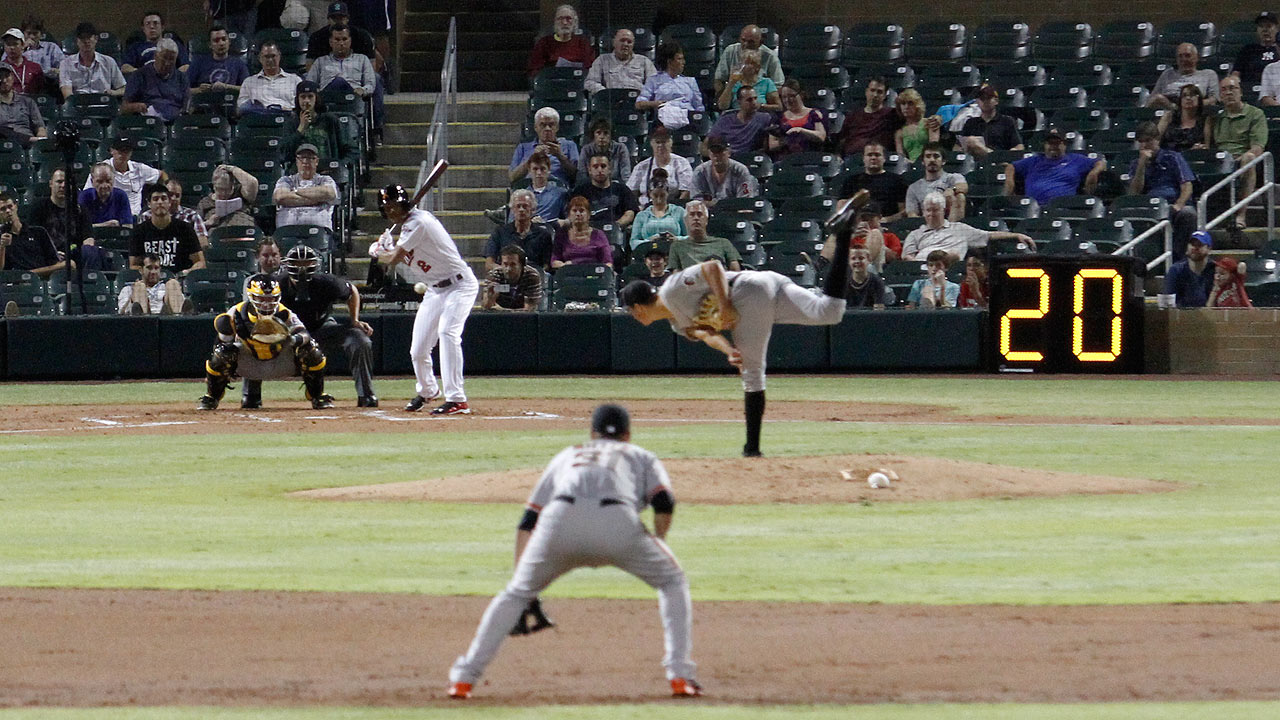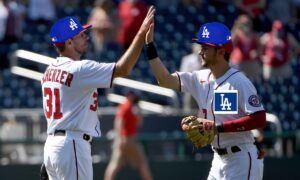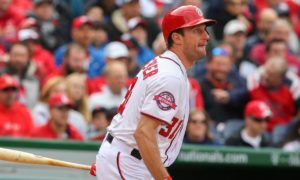To Pitch Clock or Not to Pitch Clock?

According to insider reports, Major League Baseball has delayed implementation of a regular-season pitch clock until at least 2022. The motion was part of a broad proposal that touched on a number of issues, including several changes designed to impact pace of play.
Nationals pitcher Max Scherzer, for one, believes institution of a pitch clock is “messing with the fabric of the game.” As told to the Associated Press, Scherzer, who is a member of the MLBPA’s executive board, said he is “fundamentally” against such a change and that he “would not put his name next to it.” As he believes, foul balls are slowing down the game more than anything.
In making his comments, Scherzer referenced an article for FiveThirtyEight by Travis Sawchik that details how foul balls have gone up by more than 10% in the last 20 years. Two factors loom large in the trend of increasing foul balls. One is that average fastball velocity and use of breaking balls have increased over the past decade, aided by heightened reliance on relievers. The other is that on-field foul territory in ballparks has decreased by more than 20% with new stadiums replacing old ones.
The point about foul balls is a salient one, especially given the idea that fewer foul outs are being recorded nowadays. Still, is Max Scherzer being too much of a baseball fundamentalist about these matters? Would an MLB pitch clock ruin baseball as we know it?
Let’s start with the average time of games. According to Baseball-Reference, games in 2018 were 3:04 in length. This was down from 3:08 in 2017 but in line with the three-hours-plus length that has been the trend since 2012. Notable among the related statistics are the pitches per plate appearance and the pitchers per game. On the former, 3.90 pitches/PA is the highest recorded mark since the stat has been regularly recorded since 1999 and has generally been on the incline since that time. On the latter, 4.36 pitchers per game is at its highest recorded rate in major-league history. That number has been steadily increasing over time as well.
The trend is a concerning one and the outliers may stick in our mind more than others. Fans of the Red Sox-Yankees rivalry know full well how one game can turn into a five-hour-plus marathon. Relative to other sports, however, this perhaps isn’t the concern it’s made out to be. For all the 60 minutes of game time in an NFL contest, most of the three hours or so is commercials and other stoppages. Besides, a lot of the time the clock running is just that. Between plays, there’s a lot of shifting and signaling but not a lot of action per se.
Then again, in the vein of perception is reality, baseball might simply feel slower. Anecdotally speaking, I tend to get a greater sense of satisfaction from going to see games in person than watching the game on television. At the ballpark, you hear the crack of the bat, smell the hot dogs and other concessions, and see the additional entertainment on the jumbo screens. You might even catch a foul ball. At home, there are any number of distractions or diversions that take away from the viewing experience. And, of course, there aren’t souvenirs.
These musings on the sights, sounds, and smells of live baseball games may not be swaying fans, however. Going back to Baseball-Reference, attendance was down more than 3,000,000 in 2018. What might explain this? An article written by Carson Kessler for Fortune in June 2018 explored the decline to that point in the year and suggested several reasons for comparatively poor turnout. While bad weather early in the season may have been a contributing factor, a lack of competitiveness for several teams (looking at you, Baltimore!), selling off star players (looking at you, Pittsburgh!), and a record number of strikeouts (looking at you, entire league!) probably played a larger role in depressing attendance numbers. In the case of a team like the Miami Marlins, heck, it might be all three.
If these persistent problems already plague the league, concerns about batters per pitcher, mound visits, pitch clocks, shorter inning breaks, and the like may be largely academic. That baseball has no time clock also makes it unique among the major American sports. As some might argue, messing with baseball by adding a clock risks ruining something special. As Mr. Scherzer would insist, “there’s no clock in baseball for a reason.” You can’t run out the clock. You need to get 27 (or more) outs to win. Each at-bat has weight and meaning. There’s something, well, beautiful about that.
Major League Baseball is free to consider ways to speed up and improve the game. Cutting the number of mound visits per game, for one, certainly doesn’t seem to have seriously impacted the sport in a negative way. Irrespective of game length, the conversation about a computerized strike zone is arguably one that needs having. Regarding a pitch clock, though, maybe this shouldn’t be among the league’s top priorities. There’s other reasons why people aren’t going to games or watching on TV.
-Joe Mangano


















